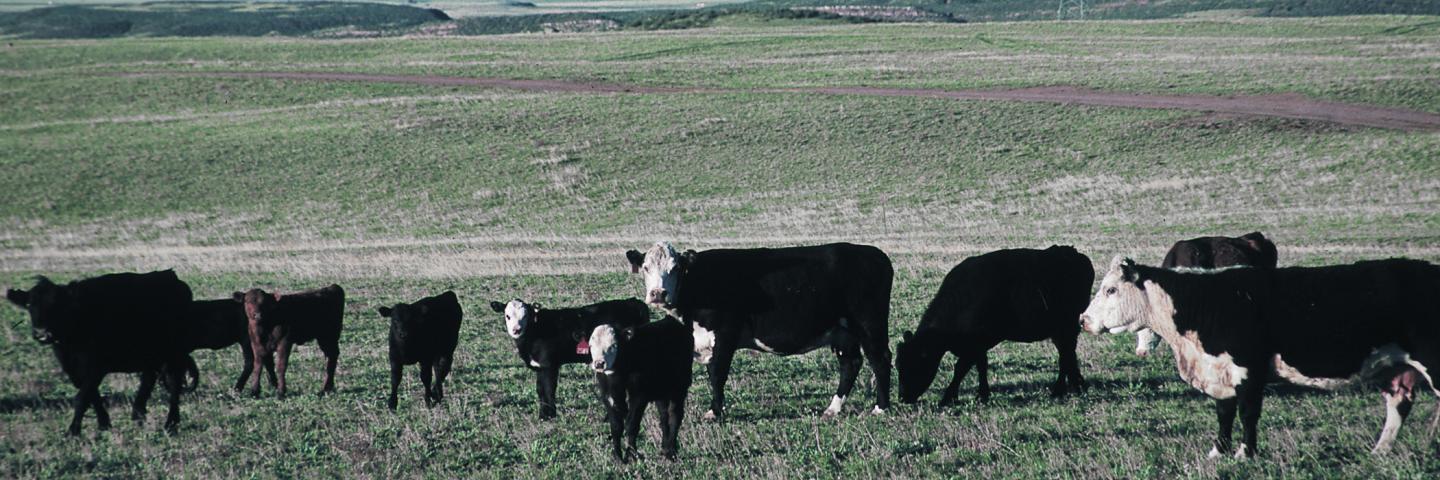Colorado State University (CSU) Among USDA Conservation Innovation Grant Award Recipients

The U.S. Department of Agriculture (USDA) is investing $40 million this year for 31 new projects through its Conservation Innovation Grants (CIG) program, including the Innovative Technologies to Reduce Beef Industry Ghg Emissions project led by Colorado State University (CSU).
The U.S. Department of Agriculture (USDA) is investing $40 million this year for 31 new projects through its Conservation Innovation Grants (CIG) program, including the Innovative Technologies to Reduce Beef Industry Ghg Emissions project led by Colorado State University (CSU). CIG is one of the ways USDA brings together partners to develop innovative approaches to climate-smart agriculture.
These investments emphasize adoption and implementation of climate-smart practices, including nutrient management, which helps producers manage nutrients and soil amendments to maximize their economic benefit while minimizing their environmental impact.
“These investments move the needle in helping agricultural producers adopt and implement climate-smart practices, including nutrient management,” said Clint Evans, State Conservationist for the Natural Resources Conservation Service (NRCS) in Colorado. “This helps producers manage nutrients and soil amendments to maximize their economic benefit, while minimizing their environmental impact.”
CIG
This year, NRCS is investing $25 million through On-Farm Trials, which supports more widespread adoption and evaluation of innovative conservation approaches in partnership with agricultural producers. Incentive payments are provided to producers to offset the risk of implementing innovative approaches.
In CO, $1,032,839 is being invested through CIG Classic via the Innovative Technologies to Reduce Beef Industry Ghg Emissions Project - This Colorado State University (CSU) project will generate science-based estimates of CO2-equivalent (CO2e) emissions from the livestock grazing and finishing sectors using novel technologies and evaluate potential CO2e reductions from conservation practices. Estimates will inform a CO2e reduction inset market for the beef supply chain to incentivize adoption.
For fiscal year 2022, NRCS set aside targeted funds for CIG Classic and On-Farm proposals that entirely benefit underserved producers, which includes producers who have previously lacked access or not participated in NRCS programs. This includes socially disadvantaged producers, military veterans, beginning farmers and limited-resource producers. Additionally, applicants competing for these set-aside funds were able to waive the non-federal match requirements.
Additional funding will be available for CIG On-Farm Trials for fiscal year 2023. The IRA provided $19.5 billion to support climate-smart practices through NRCS conservation programs, enabling NRCS to invest $50 million per year from fiscal years 2023 to 2027 for CIG On-Farm Trials. As part of the next call for proposals, NRCS will prioritize applications that focus on diet and feed management to reduce enteric methane emissions from livestock. More information on the fiscal year 2023 call for proposals is forthcoming.
NRCS will continue to leverage additional partnerships to expand capacity and reach new producers with technical and financial assistance. See the NRCS website for the list of all CIG Classic and CIG On-Farm Trials awarded projects.
More Information
NRCS has prioritized projects that serve underserved producers through CIG in recent years. Additionally, NRCS is investing up to $70 million in cooperative agreements with entities for two-year outreach projects that will increase participation by underserved producers and underserved communities in conservation programs and enhance opportunities for students to pursue careers in agriculture, natural resources and related sciences.
USDA touches the lives of all Americans each day in so many positive ways. In the Biden-Harris administration, USDA is transforming America’s food system with a greater focus on more resilient local and regional food production, fairer markets for all producers, ensuring access to safe, healthy and nutritious food in all communities, building new markets and streams of income for farmers and producers using climate smart food and forestry practices, making historic investments in infrastructure and clean energy capabilities in rural America, and committing to equity across the Department by removing systemic barriers and building a workforce more representative of America. To learn more, visit usda.gov.
#
USDA is an equal opportunity provider, employer and lender.

